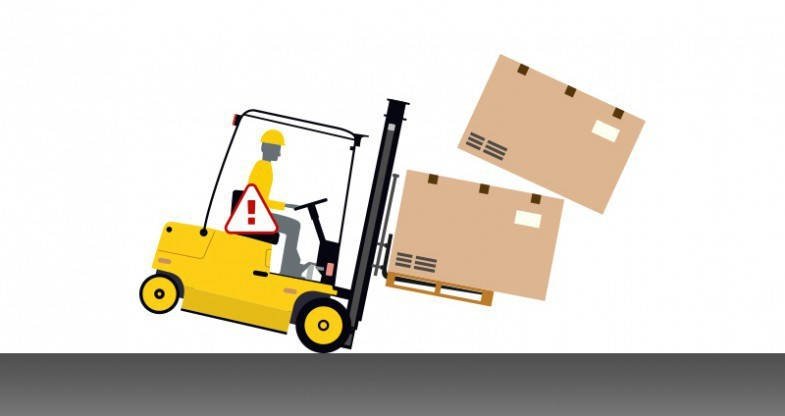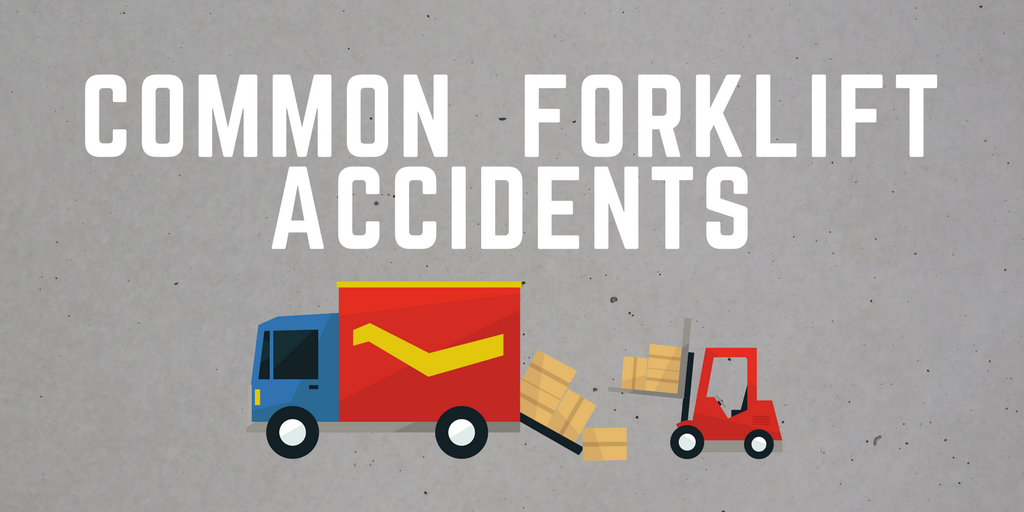Forklifts are indispensable in numerous industries, yet they can pose significant risks if not operated or maintained properly. In Houston and Humble, Texas, ensuring the safety of these powerful machines is not just a regulatory requirement but a crucial aspect of protecting workers and optimizing operational efficiency.

At Upright Forklift Repair, we specialize in maintaining the integrity of your forklift operations through comprehensive repair, timely service, and quality spare parts. We are dedicated to helping local businesses minimize risks and enhance safety on the job.
Overview : Causes of Injuries
Forklifts, while essential for heavy lifting and material handling, are also associated with numerous workplace accidents. The complexities of operating these powerful industrial vehicles can lead to situations where even a small oversight might result in serious accidents. Understanding these potential hazards is the first step towards prevention and ensuring a safer working environment.
Forklift Accident Statistics Locally
In the bustling industrial scenes of Houston and Humble, forklift accidents form a significant portion of workplace incidents, leading to injuries and sometimes severe consequences. Recent statistics indicate a troubling frequency of these accidents, with a notable percentage leading to serious injuries or fatalities.
This data underscores the critical need for businesses to invest in proper training for forklift operators, adhere to safety protocols, and ensure their equipment is maintained by professionals like Upright Forklift Repair. By addressing these key areas, local enterprises can significantly reduce the risk of accidents and enhance overall workplace safety.
What Causes Forklift Accidents?
Common Forklift Accidents
Forklift accidents can occur in a variety of ways, each often preventable with the right safety measures and awareness. The most common types of forklift accidents include overturns, collisions with other vehicles or stationary objects, and incidents involving falling loads.

These accidents typically result from a combination of factors such as improper loading, inadequate training, or mechanical failures. Understanding these common scenarios helps in developing targeted strategies to prevent them, reinforcing the importance of adhering to operational best practices and routine maintenance checks.
Severe Injuries from Forklift Accidents
The impact of forklift accidents can be devastating, often resulting in severe injuries or even fatalities. The most serious injuries include fractures, traumatic brain injuries, spinal injuries, and crushing injuries, which can occur from being struck by a forklift, falling from elevated pallets, or when a forklift overturns.

Such severe consequences highlight the critical need for rigorous safety protocols, including proper training, using Forklift Safety Parts, and regular forklift inspections. By prioritizing these safety measures, businesses can significantly mitigate the risk of life-altering injuries and ensure a safer workplace.
Forklift Accidents Involving Pedestrians
One particularly alarming aspect of forklift operations is the risk posed to pedestrians working near these heavy vehicles. Accidents involving pedestrians can happen due to poor visibility, lack of designated walkways, or simply operator error.
These incidents can lead to serious injuries or fatalities, emphasizing the need for strict enforcement of pedestrian safety measures in areas where forklifts operate. Implementing clear signage, physical barriers, and designated pedestrian zones, alongside continuous operator training on awareness and speed control, are essential strategies to prevent these accidents and protect everyone in the workplace.
Operator Influence on Safety
Forklift Operators’ Common Mistakes
Forklift operators are critical to the safe handling of these vehicles, but common mistakes can significantly increase the risk of accidents. Key errors include improper turning, excessive speed, and failure to observe safety protocols such as checking for clear pathways or properly securing loads.
Additionally, operator fatigue and poor communication with other team members can lead to dangerous incidents. Addressing these issues through regular assessments and reinforcing the importance of safety standards is crucial for minimizing accidents in industrial settings.
The Impact of Proper Training
The role of proper training in enhancing forklift safety cannot be overstated. Comprehensive training programs equip operators with the knowledge and skills needed to navigate the complexities of forklift operations safely. This includes understanding the machinery, learning specific handling techniques, and recognizing potential hazards in different environments.
Effective training also covers emergency procedures and the use of personal protective equipment. By investing in high-quality, continuous training, businesses can significantly reduce the incidence of forklift accidents, thereby protecting their workers and maintaining efficient operations.
Mechanical and Environmental Factors
Equipment Failure and Accidents
A significant factor in forklift accidents is equipment failure. Issues such as brake malfunctions, hydraulic failures, or steering issues can lead to uncontrollable situations, endangering the operator and others nearby. Regular maintenance and inspections are essential to identify and rectify potential problems before they result in an accident.
By ensuring that all mechanical components of a forklift are functioning correctly, businesses not only comply with safety regulations but also enhance the overall safety and efficiency of their operations.
Workplace Hazards and Poor Visibility
Environmental factors such as workplace layout, lighting, and visibility play crucial roles in forklift safety. Poor visibility, whether due to inadequate lighting, obstructed views, or crowded aisles, can greatly increase the risk of accidents involving forklifts. Similarly, workplace hazards like unstable surfaces, cluttered walkways, and unmarked pedestrian zones can lead to serious accidents.
It is vital for facilities to regularly assess and improve their environmental conditions by enhancing lighting, clearing potential obstacles, and implementing comprehensive safety signage to ensure a safer working environment for both forklift operators and pedestrians.
Legal and Health Considerations
Workers Compensation Benefits
In the event of a forklift accident, understanding the legal entitlements, such as workers’ compensation benefits, is crucial for both employers and employees. Workers’ compensation covers medical expenses, lost wages, and rehabilitation costs for injuries sustained while on the job, ensuring that injured workers receive the necessary support for their recovery.
For businesses, maintaining compliance with safety standards and workers’ compensation laws not only helps manage financial liabilities but also demonstrates a commitment to employee welfare, fostering a safer and more productive workplace environment.
Medical Treatment After Forklift Injuries
Immediate and appropriate medical treatment is critical after forklift injuries to mitigate severe health consequences. Forklift accidents can lead to a range of injuries, from minor cuts and bruises to more severe cases such as fractures, crush injuries, or head traumas.
Establishing protocols for emergency response and facilitating swift medical treatment ensures that injured workers receive the best possible care, supporting their health and speeding their return to work.
Safety Procedures and Protocols
Implementing robust safety procedures and protocols is essential for minimizing the risk of forklift accidents. This includes establishing clear guidelines for operating equipment, conducting regular safety audits, and enforcing strict adherence to safety practices among all staff.
Effective safety protocols also involve training employees on emergency response techniques and the proper use of personal protective equipment. By consistently applying these safety measures, businesses can create a safer environment that not only protects employees but also enhances operational efficiency and reduces the likelihood of costly disruptions.
Occupational Safety and Health Administration Guidelines
Adherence to the Occupational Safety and Health Administration (OSHA) guidelines is fundamental for businesses operating forklifts. OSHA provides comprehensive standards that cover various aspects of forklift safety, including operator training, equipment maintenance, and workplace conditions.
Following these guidelines helps prevent workplace injuries and ensures legal compliance. Regular training sessions to update employees on these regulations and continuous monitoring of compliance are crucial steps in fostering a culture of safety that aligns with federal safety standards.
Upright Forklift Repair’s Role in Enhancing Safety
Specialized Repair and Maintenance Services
At Upright Forklift Repair, we understand that the foundation of forklift safety begins with proper maintenance and repair. Our specialized services ensure that each forklift operates at peak performance and adheres to safety standards.
By conducting thorough inspections and addressing any mechanical issues promptly, we help prevent equipment failures that could lead to accidents, ensuring that your forklifts are not just operational but safe.
Supply of Quality Spare Parts
A critical aspect of maintaining forklift safety is the use of high-quality spare parts. At Upright Forklift Repair, we provide top-tier spare parts that meet or exceed industry standards, ensuring that repairs are durable and reliable. Using quality parts not only prolongs the lifespan of your equipment but also significantly enhances safety by reducing the likelihood of malfunctions and breakdowns during operation.
Key Factors Leading to Forklift Injuries
Forklift injuries often stem from a few common yet preventable issues, primarily improper backing, operator error, and poor maintenance. Improper backing, for instance, can lead to collisions with pedestrians or obstacles, particularly in tight spaces. Operator errors, which may include misjudging distances or mishandling the controls, frequently contribute to these incidents.
Moreover, the neglect of regular maintenance can cause mechanical failures, leading to potentially dangerous situations. Adhering strictly to safety protocols and conducting regular equipment checks can dramatically reduce the incidence of these accidents, ensuring a safer environment for everyone involved.
The Role of Environment in Forklift Safety
The environment in which a forklift operates plays a crucial role in the safety of both the operator and nearby workers. Poor lighting can obscure vision, making it difficult for operators to see pedestrians or obstacles in their path. Cluttered pedestrian walkways can increase the risk of accidents, as operators may have limited maneuvering space.
Common Forklift Accident Scenarios and Prevention
Frequent forklift accidents include falling load incidents, collisions at loading docks, and forklift overturns. Falling loads often occur when cargo is not properly secured or when forklifts maneuver abruptly. Collisions at loading docks can happen due to congested areas or miscommunication between drivers and dock workers.
Forklift overturns are typically caused by improper handling at high speeds or on uneven surfaces. To mitigate these risks, it is crucial to enforce strict load securing protocols, conduct regular equipment checks, and train operators on safe maneuvering techniques. Such preventive measures can significantly reduce the likelihood of accidents and ensure a safer working environment.
Managing Forklift Traffic in Industrial Settings
In bustling environments like manufacturing plants and retail businesses, managing forklift traffic is essential for safety. Effective traffic management plans should include designated routes for forklifts, clear signage to direct flow and inform pedestrians, and strict speed limits.
Utilizing motorized hand trucks for smaller tasks can also reduce forklift traffic and minimize risks. By organizing forklift operations and implementing these safety measures, businesses can prevent collisions and ensure a safer workplace for both operators and pedestrians.
Importance of Medical Care Following Forklift Accidents
After a forklift accident, immediate medical care is paramount. Quick and accurate medical diagnosis not only facilitates a faster recovery for injured workers but also ensures that all injuries are properly documented, which is crucial for processing workers’ compensation claims.
